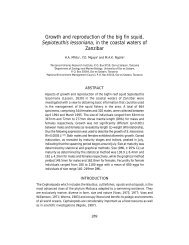gpa_east_africa_case.. - GRID Africa GeoPortal - UNEP
gpa_east_africa_case.. - GRID Africa GeoPortal - UNEP
gpa_east_africa_case.. - GRID Africa GeoPortal - UNEP
You also want an ePaper? Increase the reach of your titles
YUMPU automatically turns print PDFs into web optimized ePapers that Google loves.
Annex IIMombasa Regional and City ProfileCity BackgroundThe District of Mombasa covers a total of 282 sq. km, 65 sq. km of which is open water. It isthe smallest among the seven districts that constitute the Coast Province of Kenya. TheDistrict is further divided into the 4 administrative Divisions of Mombasa Island, Likoni, Kisauniand Changamwe. The Island Division is the smallest, but the most built up. It is a port town ofnational and international significance, a center for tourism, maritime commerce and largeindustrial establishments. It also houses large human settlements. The other remainingdivisions are rural in characteristics.Area of the District by DivisionDivisionArea in Sq. Km.Mombasa Island13Kisauni100Likoni48Changamwe49Total 210Source: Government of Kenya, Mombasa District Development Plan 1997-2001Creeks. Mombasa Island is surrounded by a number of Creeks: Tudor, Makupa, Junda,Kilindini and Port Reitz. By their nature, creeks create steep cliffs that contributed to theformation of deep harbours. The port of Kilindini in Mombasa is of great importance not onlyto Kenya and East <strong>Africa</strong> but also to other land locked countries of central <strong>Africa</strong>.Mangrove Forests. Mangrove forests are the only gazzetted forests in Mombasa District.They cover a total area of 3059.4 ha; Port Reitz 1017.5 ha. Tudor Creek 1321.4 ha. andMtwapa Creek 720.5 ha.Watershed conditions. There are no rivers of any major significance in Mombasa District.Water supply to the district comes from sources outside the District but within the Provinceand the supply does not meet the demand. There is a large potential for groundwater in theDistrict to supplement the shortfall. Groundwater is tapped through shallow wells andboreholes but the water is often either saline, highly mineralized or if fresh, contaminated frompit latrines or septic tank soakage pit systems typically used for the disposal of sewage inlarge settlements. As a result, the supply of surface and ground water comes from sourcesoutside the District.The present state of the quality of the groundwater in Mombasa remains poor and is expectedto deteriorate as population needs and other economic uses of the water continue to increasewhile alternative supplies are not found. The cost of water management and water qualitymonitoring is presently unaffordable both for the local authority and any imposition of wateruser charges for cost-recovery will be unaffordable to the households.Population. The population of Mombasa according to the 1999 Population Census is653,000 persons. The population distribution figures by Divisions are not yet available and aretherefore estimated according to the 1989 Census as shown in the table below.Population Distribution and Density (persons/km. sq.)Division Population Population DensityMombasa IslandKisauniLikoniChangamwe180,30021800095,400159,30013869218019883251Total 653,000 Average 3,111Source: Government of Kenya, Population Census 1989 and 1999Population growth. The District population growth rate is 4% per annum, which is higherthan that of the Province of 3.1% per annum. In-migration of labour force for urbanFinal Draft Report – Cost Benefit Case StudiesGPA Strategic Action Plan on Sewage, October, 200070



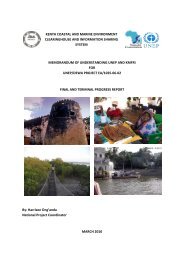
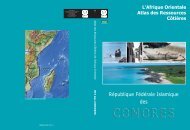
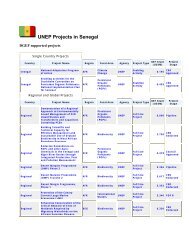

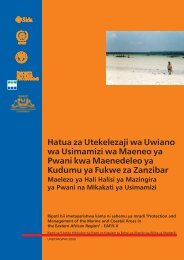
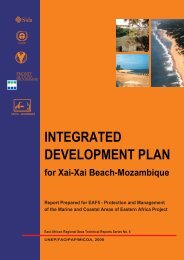
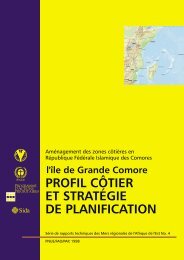
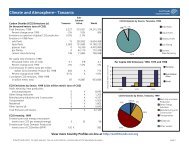

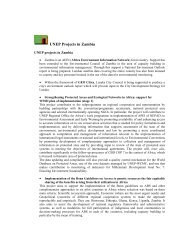
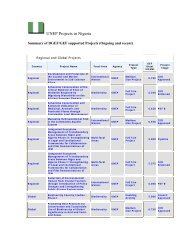
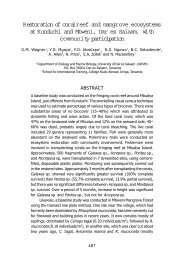
![Please Click to download [English] - GRID Africa GeoPortal - UNEP](https://img.yumpu.com/30633391/1/184x260/please-click-to-download-english-grid-africa-geoportal-unep.jpg?quality=85)
